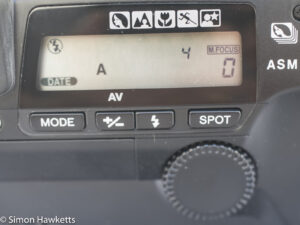This Minolta Vectis S-1 camera is a first for my camera collection because it's the only APS camera I have. I got it because I read an article on the Advanced Photo System and was interested to see what the cameras which shot this film were like.
Minolta Vectis S-1 Images

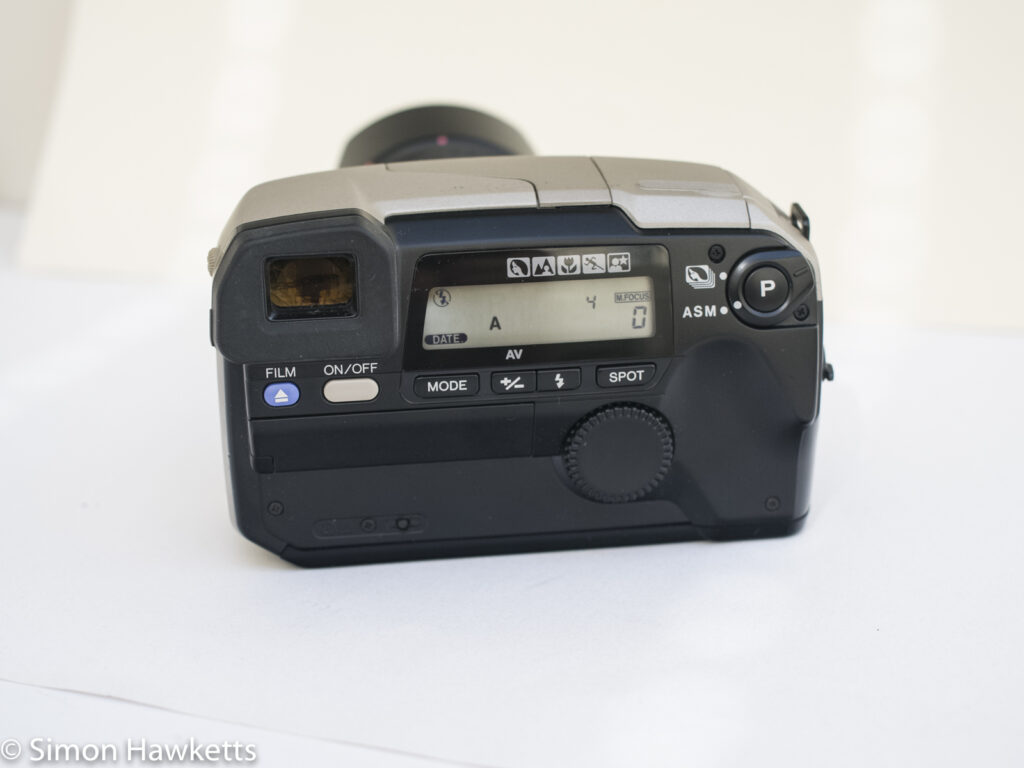
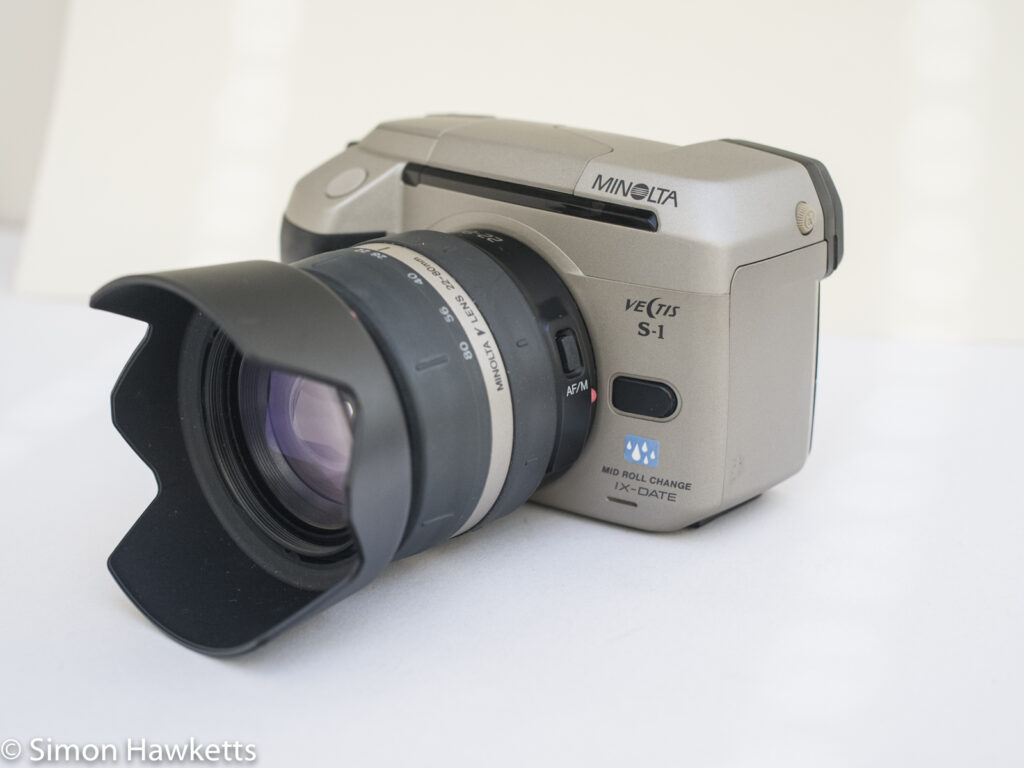

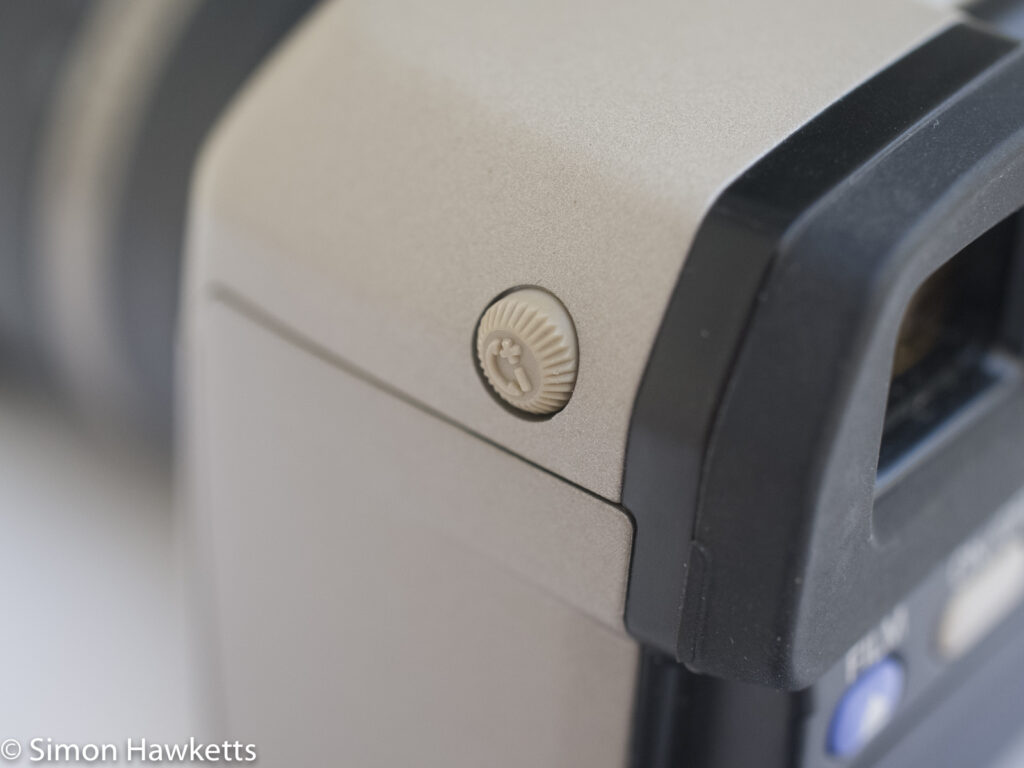
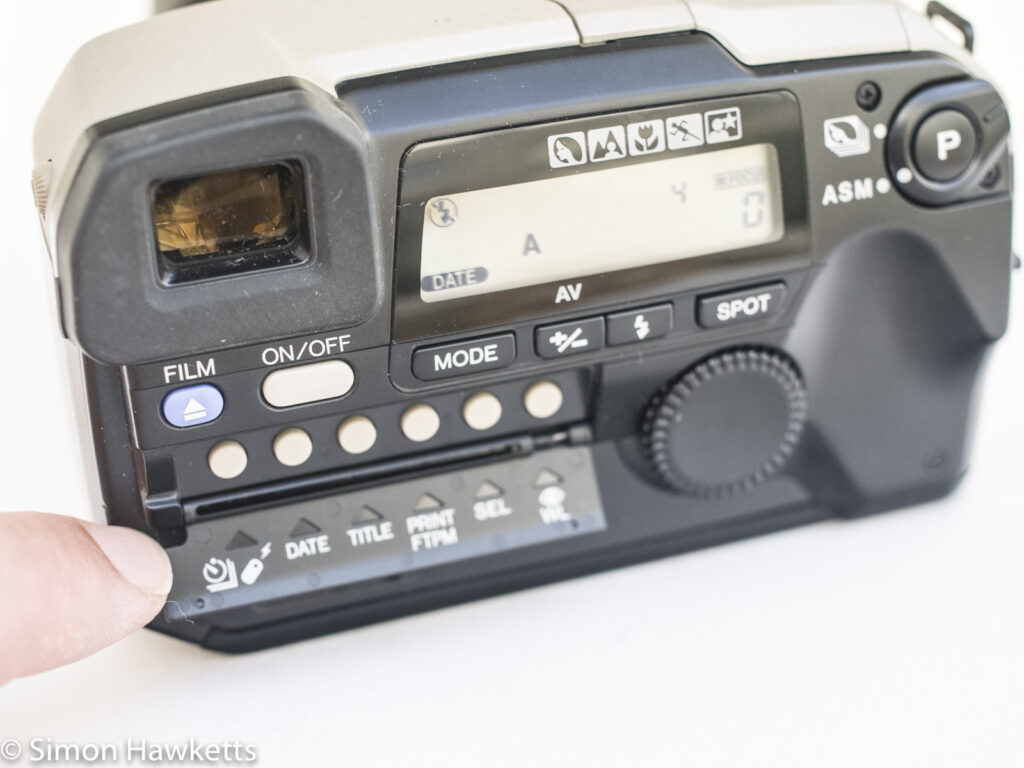
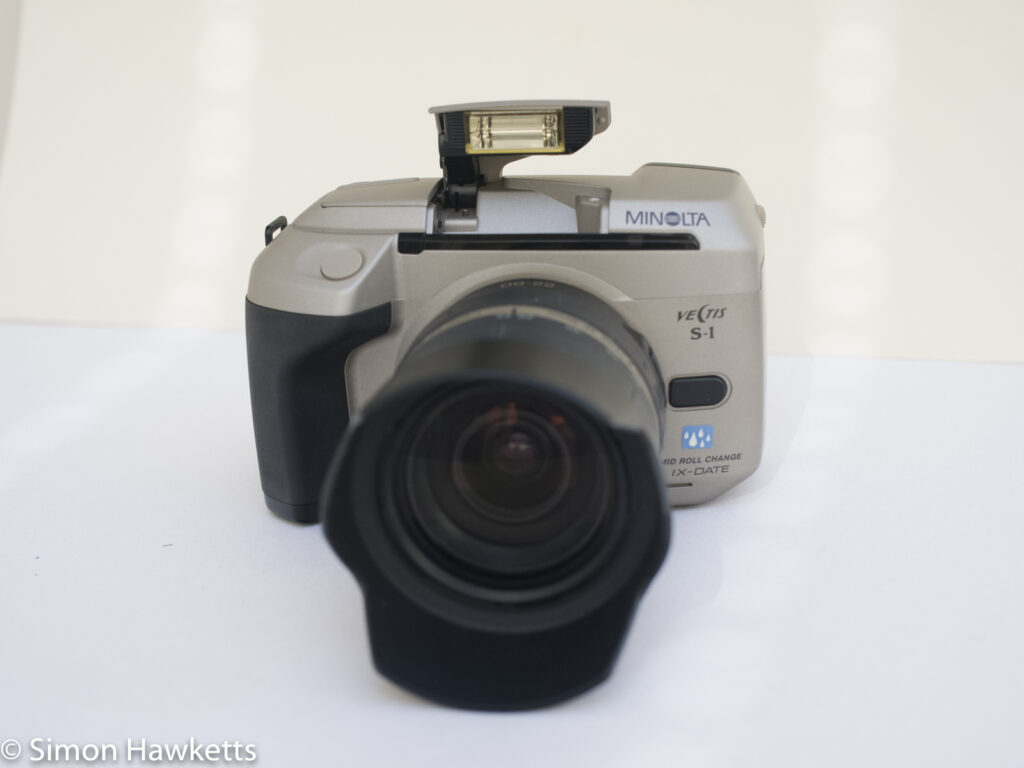
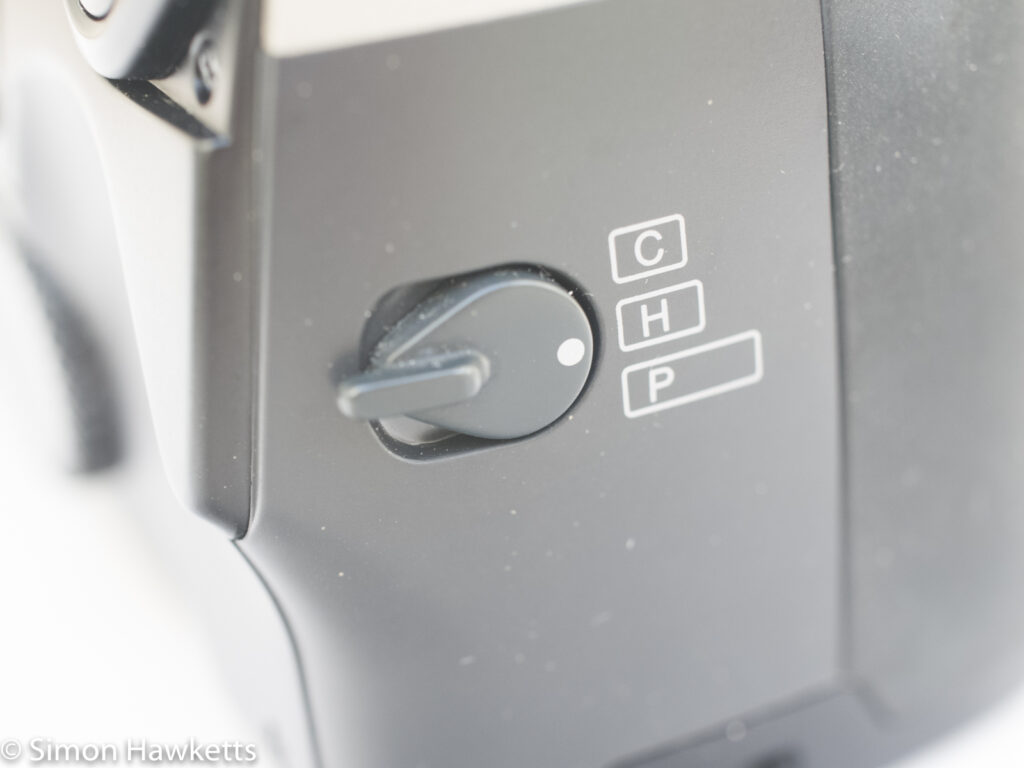
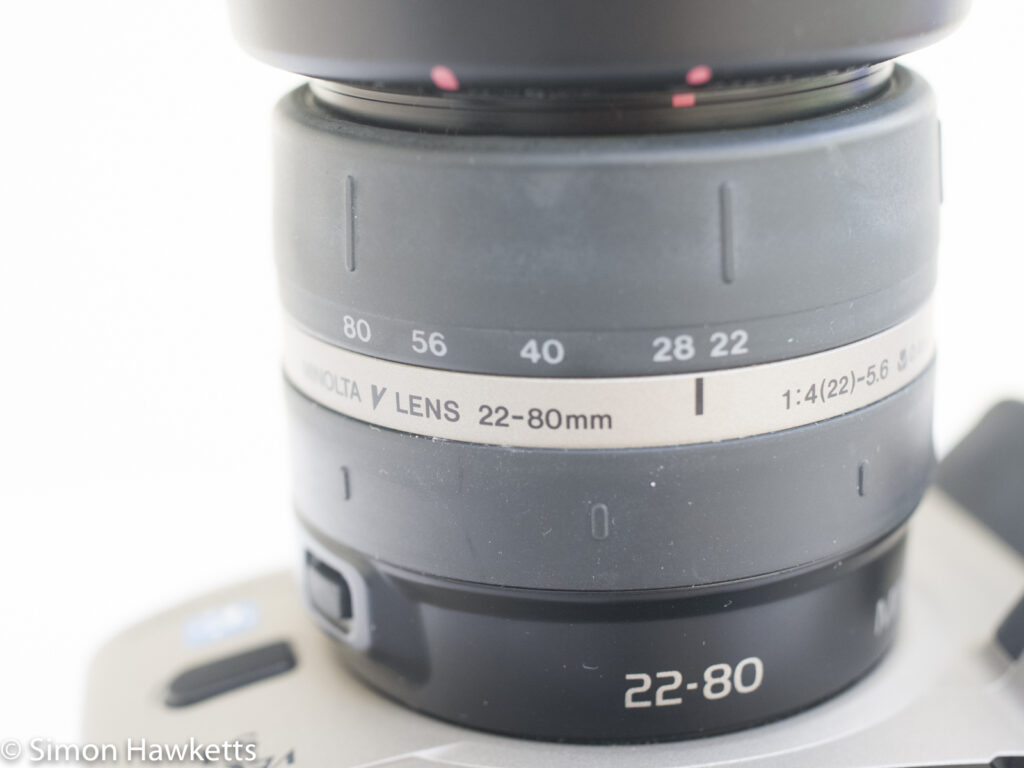
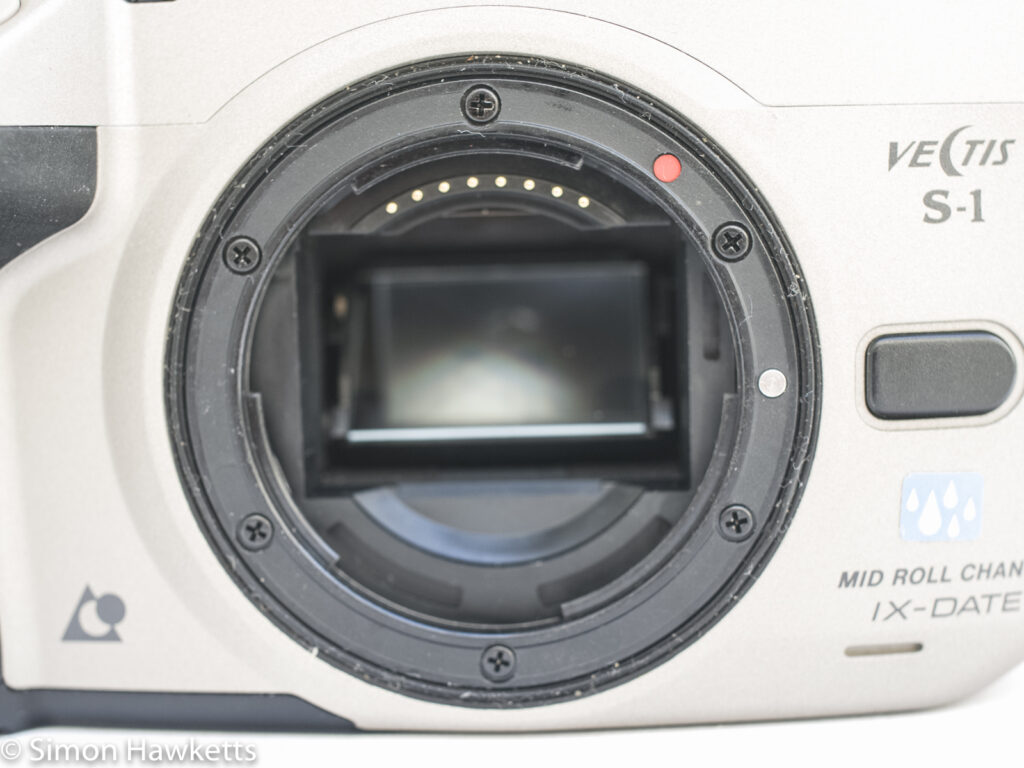
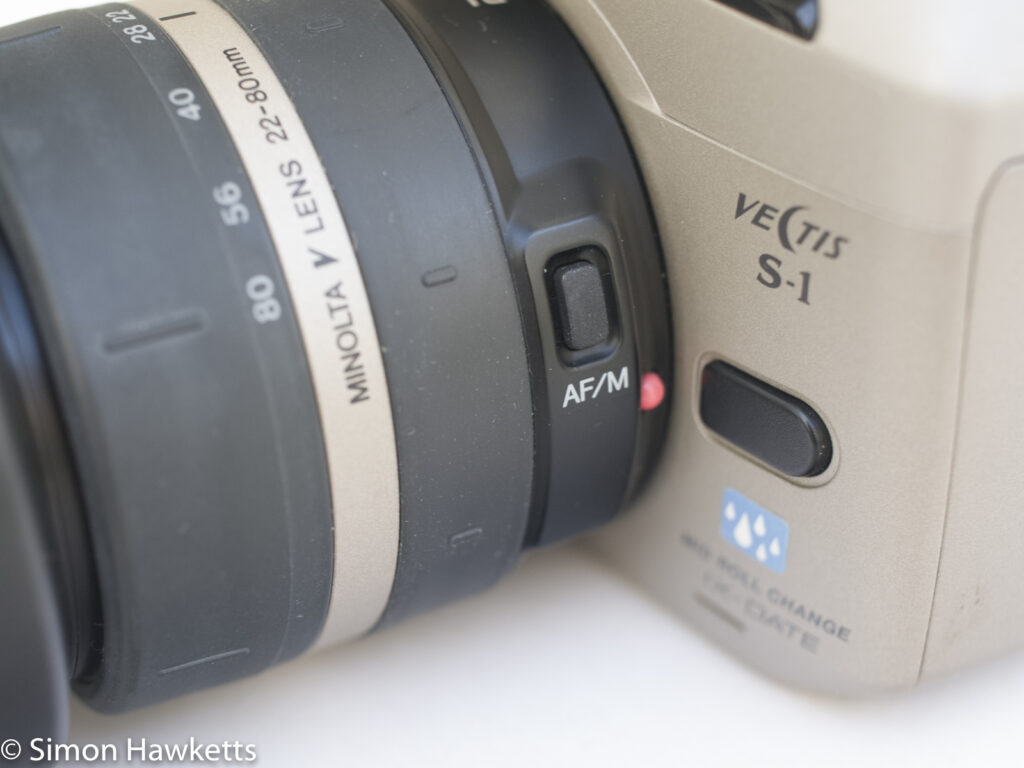



Advanced Photo System
The Advanced Photo System or APS was introduced by Kodak in the late 1990s and was the first step towards introducing digital technology into picture taking. A cartridge of APS film was not just film - embedded into the edge of the film was a magnetic track which the cameras used to write information applicable to the shot just taken such as aperture, shutter speed etc, and this could also be used to add user generated information such as titles, how many prints to produce during processing etc.
APS cameras also had the ability to take different aspect ratio pictures. These were
- Panorama (APS-P at 3:1)
- High Definition (APS-H at 16:9)
- Classic (APS-C at 3:2)
The cameras had a picture selection control which allowed the photographer to select which of these formats each picture would be as it was taken.
Another really useful feature of APS was the ability to change the film mid-roll. If you wanted to change to black & white or alter the film ISO, you no longer needed to finish the roll to do that. The film could be ejected and replaced, and when it was refitted to the camera it would be wound to the correct point ready to expose the next picture.
One of the reasons this worked was because the film cartridge didn't have an exposed leader, and loading was a very simple process. A door in the side of the camera was popped open and a cartridge of film was dropped in. The camera then took care of loading the film and, when exposed, rewinding the film back into the cartridge. In fact, the film was left in the cartridge after processing, so it wouldn't be 'handled' by the user and get damaged.
When I read about APS it seemed to offer some amazingly useful additions, so I had a look on eBay/Amazon to see how much cameras and film were and that's when I discovered that APS film is no longer produced. It is possible to still obtain expired film, but not new film. This seemed to be odd because from what I'd discovered I would expect it to be very popular, so I tried to do a bit of research to find out why the format hadn't worked.
It seems the first reason the APS didn't succeed was down to cost.
When first introduced, the cost of buying the film and processing was about 40% more than the equivalent 35 mm film. This was probably because of the expense of buying new processing equipment for the labs, as the film couldn't be processed using 35 mm machines.
During processing the film needed to be extracted from the cartridge, developed, dried and printed and then re-inserted into the cartridge to be returned to the user. Since the machines to do this cost a lot, businesses were trying to recoup that cost within a reasonable timeframe, which pushed up the processing prices.
I suspect also that the fact that the film remained in the cartridge led to a low uptake with anyone who developed their own film - both pro photographers and serious amateurs. In fact, it was only later in the life of APS that serious cameras were produced - the initial offerings were all in the 'point-n-shoot' class. Although it's possible for a system to succeed without this group, it certainly won't help if they aren't on board.
Another issue which influenced the success of APS was the fact that the actual picture size of the negative was smaller than 35 mm film. This is a familiar argument in today's digital camera world and in fact the argument is very much the same one because modern DSLR's fall into two categories: the APS-C sensors and the full frame sensors and those terms and sensor sizes stem from the APS v 35 mm days.
An APS-C sensor is the same size as the APS film 'classic' negative size, and the 35 mm negative is the same as a modern full frame sensor. At the time APS film was introduced new technologies were introduced to improve the resolution and the argument was made that this new film stock allowed the smaller negative to give similar results to 35 mm film, but that argument was negated somewhat after the same film technology was then used to make 35 mm film!
Of all these reasons I suspect that it was cost which really made the big difference and one other reason which I haven't yet mentioned - in the late 1990s digital cameras were not very high quality and were expensive to buy. By the early 2000s that had changed quite a bit and digital cameras were getting to the point where the picture quality for normal family snaps was on par or better than APS could obtain, and they had the basic advantage that digital offers which is instant low cost pictures. This and the cost finally finished off APS.
Minolta Vectis S-1 Description
After that diversion on the APS system I'll give a bit of information on the Minolta Vectis S-1 which is an exchangeable lens, autofocus, high-end APS camera.
A feature of APS cameras is that because the negative produced is smaller the body and lens can also be a lot smaller and although this is an SLR camera it is about the size of a large 35 mm compact camera. That makes it quite easy to carry a body and a couple of lenses around without a great deal of weight.
Exposure modes
Full exposure control is offered with the standard Program mode, Shutter priority, Aperture priority and full manual control along with an exposure compensation option. There are also a selection of scene modes available for photographers who are not familiar with setting their camera for particular effects. When set to the auto exposure modes the adjustment of exposure is made with a control wheel on the back of the camera body which would be a bit awkward when the camera is held to the eye, particularly so in Manual mode when the wheel controls the shutter speed, and you need to also press the exposure compensation button to adjust the aperture.
Focusing
The Minolta Vectis S-1 is an autofocus camera, but the focus performance is pretty slow and not particularly accurate when compared to a camera of similar vintage like my Dynax 5. It's also 'focus by wire' in manual mode, which makes it a poor performer when used in manual focus mode as well. When moving from a close object to a distant object, I noticed the camera takes several attempts to get the focus locked, and sometimes stopped with the subject still noticeably blurry.
Metering
The metering is performed by a 14 segment averaged pattern, which has the option of switching to a spot metering system.
APS functions
The Minolta Vectis S-1 is a high spec camera when it comes to APS functionality. There is a small flap on the back panel which has a set of buttons which allow date imprint, titles, no of prints etc to be set. On the side of the camera is a switch which allows the picture format to be changed, and these changes are reflected in the viewfinder by masking the sides or top & bottom of the frame. There is also a sticker on the front proclaiming 'mid-roll change' and also a small graphic showing raindrops - I assume this means there is a level of weather proofing.
Lenses
The lenses for the Vectis system were not compatible with the other bodies which Minolta made because of the smaller image circle produced, but unfortunately they are also a different mount, so it isn't possible to fit the standard Minolta lenses to this body. It's also unfortunate that because the lenses are completely electronically controlled, it isn't possible to adapt them to modern mirrorless cameras either.
Overall an interesting camera even though the system itself was ultimately a failure.
Minolta Vectis S-1 Specifications
- Minolta Vectis S-1 APS slr camera
- Auto exposure and manual mode
- Picture modes for beginners
- 30sec to 1/2000sec shutter
- +/- 3 stops exposure compensation
- Auto focus + 'focus by wire' manual focus
- 14 segment average metering + optional spot metering
- Built in pop-up flash
- Multi aspect ratios via switch
- Full exposure information in viewfinder
- Auto load and auto wind - up to 1 frame per sec.
- Diopter viewfinder adjustment
- Ser No 00618218
- Manual available on-line here

